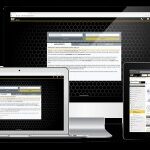Auto Tuning Software simplifies the complex process of PID controller tuning. RSTune, a popular auto tuning software, automates this process by analyzing a system’s response to changes and calculating optimal PID values. This guide provides a practical overview of how RSTune works.
RSTune communicates with your Programmable Logic Controller (PLC) through RSLinx, a communication protocol, and graphically displays the process response. To begin, configure RSTune with the address of your PID’s control block. This allows the software to interact with your specific controller.
Before initiating the autotune procedure, ensure your system operates at a steady state, either in manual or automatic mode using existing PID values. Crucially, avoid any load changes or disturbances during the autotune process. Consistency in the system’s behavior is key for accurate analysis.
To start the test, instruct RSTune to begin. The software will request permission to increase the setpoint, typically by around 7%. If operating in manual mode, it will request to increase the controller output by a similar percentage. This perturbation allows RSTune to observe the system’s dynamic response.
Observe the process response on the graph until it settles at a new steady state. This indicates the system has adapted to the change introduced by RSTune. Once stability is achieved, signal RSTune that the new steady state is reached. This confirmation allows the software to proceed with its calculations.
Based on the observed response, RSTune automatically calculates and displays recommended PID values. These values represent the optimal settings for your controller based on the system’s specific characteristics. You can then download these new values directly to the PID controller with a simple click.
While RSTune offers additional features, this outlines the core autotuning process. RSTune generally provides effective tuning for stable systems. However, if your system exhibits erratic behavior or instability even in manual operation, RSTune might not yield satisfactory results. The software relies on a stable system response transitioning between steady states for accurate calculations. Therefore, a consistently unstable system will likely not respond well to autotuning. If your system lacks a steady state response, RSTune might not provide the desired outcome.

